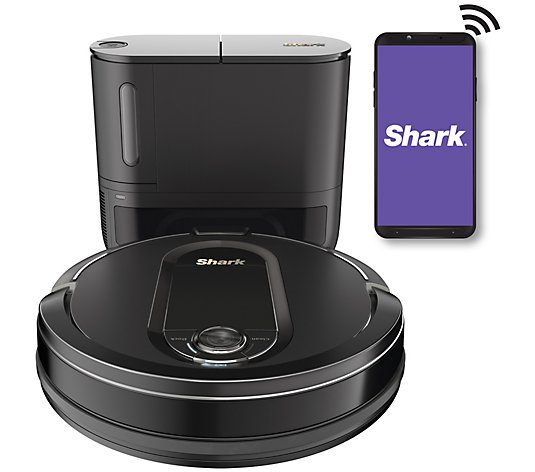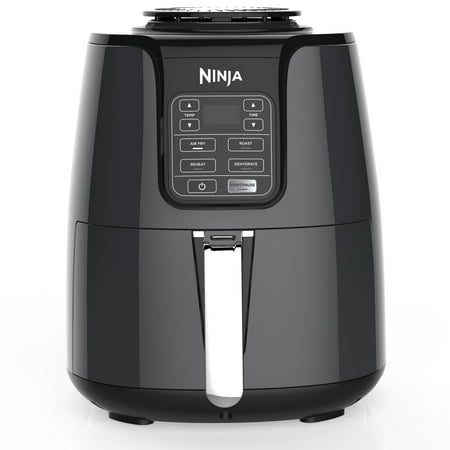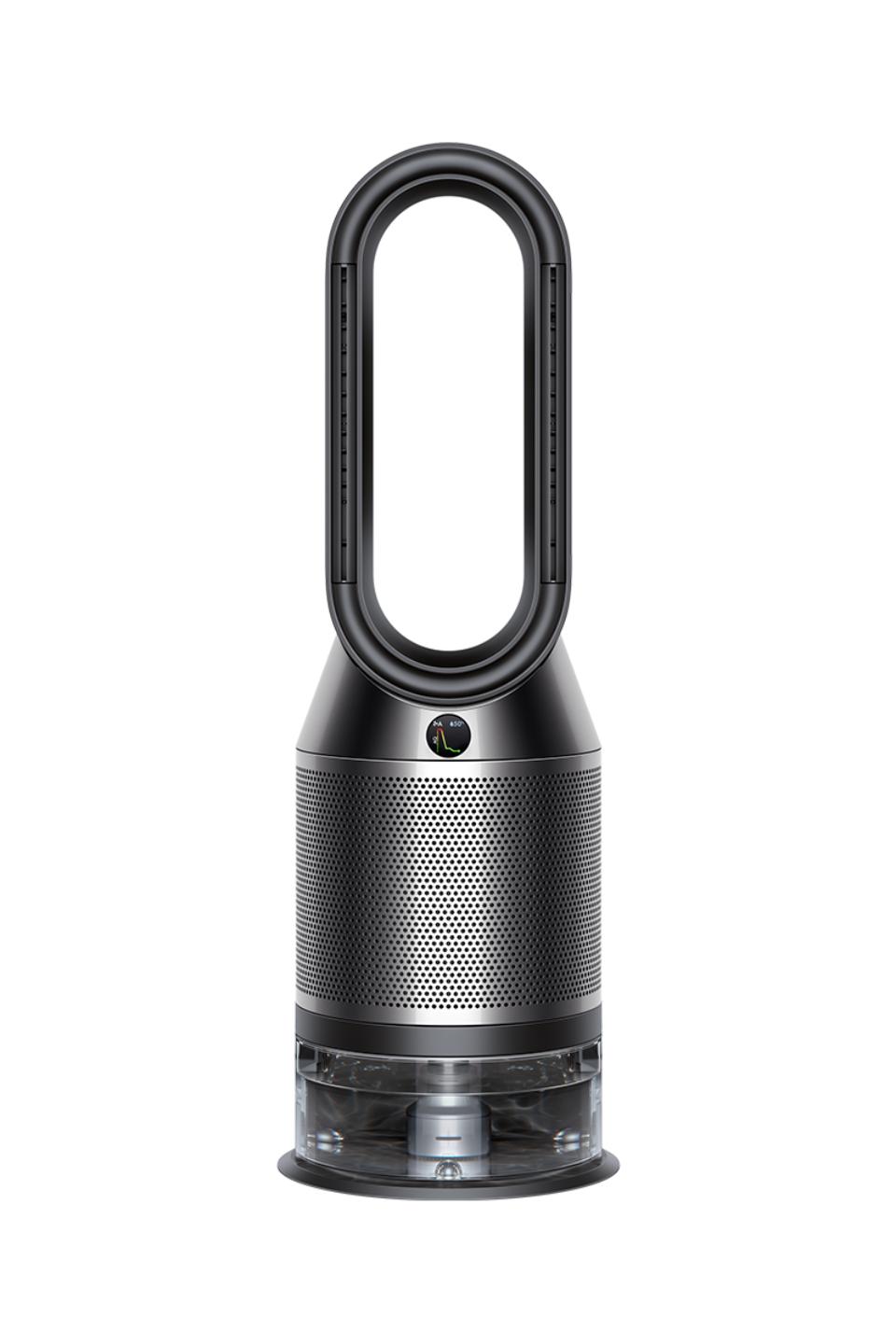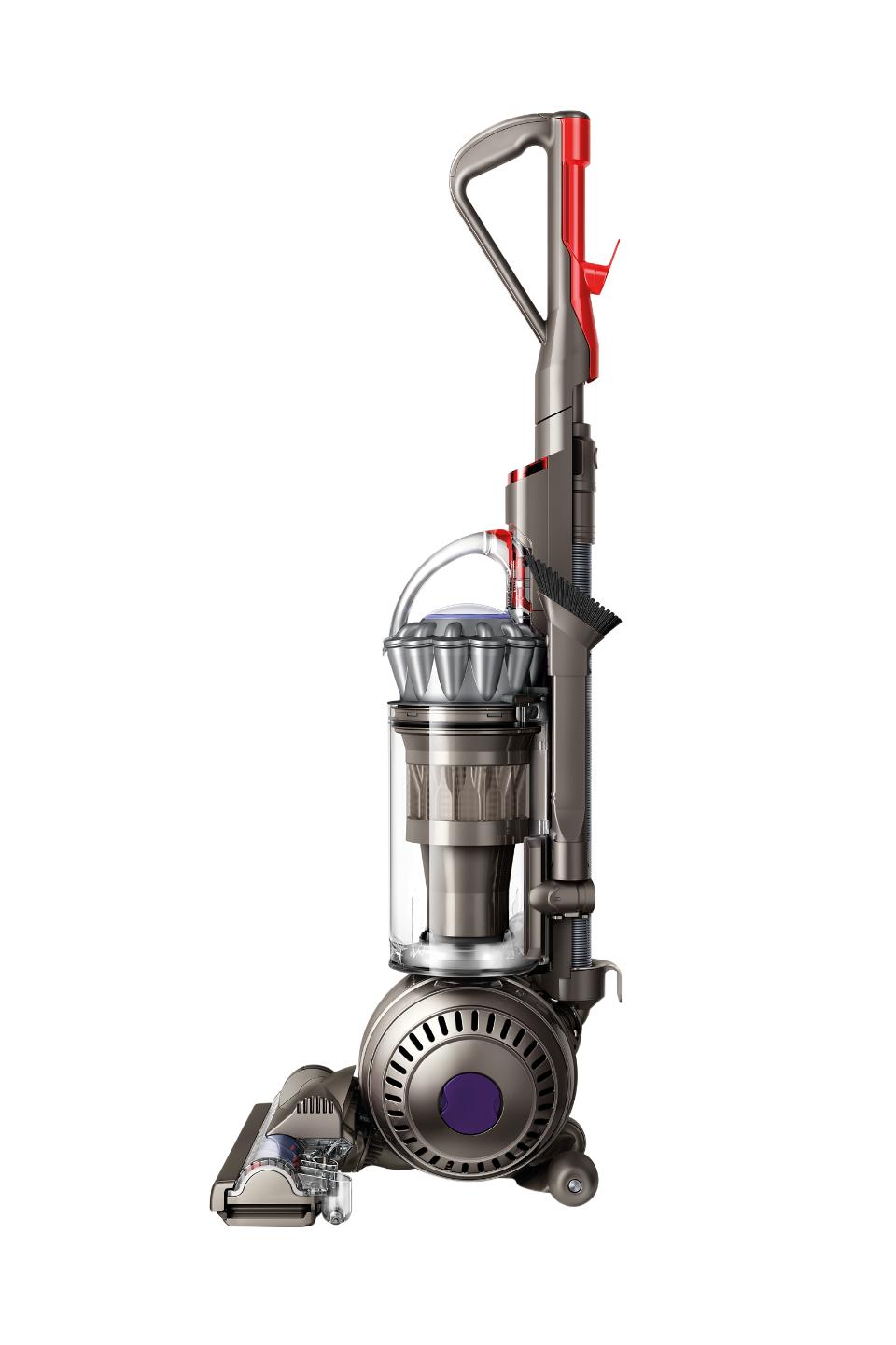Shark IQ Wi-Fi Robot Vacuum w/ Self-Empty Base & Self-Cleaning Brushroll
FORGET ABOUT VACUUMING FOR UP TO A MONTH: A bagless, self-emptying base holds up to 30 days of dirt and debris. POWERFUL SUCTION: Deep-cleaning power to take on large debris, small debris, and pet hair on carpets & floors. NO HAIR WRAP: Self-cleaning brushroll removes pet hair and long hair as it cleans – no more hair wrap.
Looking to make a high-IQ play? It doesn’t get much smarter than this! Bring the Shark IQ Robot vacuum home and put down the push vac (at least for a little while). The smart navigation starts with the SharkClean mobile app where you can map out your home and watch this little robot clean row by row and room to room for a complete home clean!
But wait, it gets better. Shark’s self-cleaning brushroll means no hair-wrap (we all know how annoying that can be). And the fierce filter captures and traps 99% of dust and allergens down to 1 micron. Impressive.
Don’t even worry about emptying it right away either. This smart vac automatically returns to its base station to recharge and prepare for its next run. And did we mention that the base station ALSO has the ability to hold up to three weeks of dust and debris? Well, well — isn’t that neat? From Shark.
- Gray and white colors exclusive to QVC until 3/31/21
- Includes Shark IQ Robot® robotic vacuum, self-empty base, three sets side brushes, two filters, 8’L BotBoundary® strip, and 13’L BotBoundary® strip
- Bagless self-empty base holds up to three weeks of dust and debris
- IQ NavigationTM total home mapping
- Self-cleaning brushroll for no hair wrap
- Multi-stage filtration
- Dual spinning side brushes
- The filter captures and traps 99% of dust and allergens down to 1 micron
- Recharge and resume
- Voice control compatible with Google Assistant and Amazon Alexa
- For use with SharkClean mobile app
- Measures 13.38″ x 18.5″ x 11.42″
- UL-listed base station; 1-year Limited Manufacturer’s Warranty
- Imported
Additional information
| Product Dimensions | 12.9 x 12.6 x 3.5 inches |
|---|---|
| Item Weight | 13.2 pounds |
| Manufacturer | SharkNinja |
| Item model number | RV1001AE |
| Batteries | 1 Lithium ion batteries required. (included) |
| Specific Uses For Product | Hard floor, Carpet, Dual action |
| Is Assembly Required? | No |
| Warranty Description | 1 year limited warranty. |
| Included Components | (1) Filter, (1) Self-empty base, (2) Side brushes, (1) Shark IQ Robot, (1) BotBoundary Strips |






by Dinky
I absolutely love this. I have been looking at getting one of these for quite sometime but could not justify the cost. When I was watching the demonstration on QVC and the improvements they have made, well I was hooked. I love the fact this empties out the dirt by itself and I can go several days before I need to empty the cup. A push of a button and it all falls into the trash. I also can not believe how much sand and pet hair this picks up daily. It is only my husband and I and a cat and dog. I have this going Monday – Friday and there is always sand and hair. You can also change the suction power when needed which is nice or just send it to one particular room that needs done. It is so nice to have clean floors everyday with no effort. I have dark wood floors and sometimes you can see the. dirt, when this vacuums I no longer see that dirt or layer of dust. Easy set up also.
by Crissy
We love “Sharkie”! Still trying to figure her out – 🙂 …but we are loving the quick pick-up of the dog hair. We do have to dump the reservoir pretty frequently, but still better than vacuuming every day! Taking a while to learn the map of the house – but again – loving our new Sharkie!
by Michael
I WAS A LITTLE SKEPTICAL BUT FIGURED I WOULD RETURN IF IT DIDN’T DO WHAT IT SAID IT WOULD. I HAVE HARDWOOD FLORRS W/ ALOT OF SCATTER RUGS, IT DOES NOT GET TRIPPED UP W/ THEM IT SEEMLESSLY GOES FROM CARPET TO HARDWOOD NO TROUBLE AT ALL. WHEN IT IS MANUVERING AROUND THE FURNITURE & TABLE LEGS ETC. IT DOES NOT CRASH INTO THINGS IT VERY GENTLY BUMPS AND REFIGURES ITSELF. I WAS A LITTLE NERVOUS AROUND THE DOG BOWLS OF WATER (IT DOES NOT KNOCK THEM OVER SO NO WORRIES THERE )AS A MATTER OF FACT I’M IN THE OTHER ROOM TAKING A BREAK WRITING THIS AND MY ROBOT IS VACUUMING ! LOL
IT’S VERY QUIET, MUCH MORE QUIET THAN ANY OTHER VACUUM I’VE HAD. IT’S GREAT THAT I CAN BE IN THE OTHER ROOM CLEANING SOMETHING ELSE WHILE THE ROBOT IS VACUUMING THE REST OF THE HOUSE. LIKE A 2ND PERSON HELPING YOU CLEAN ! NOW THAT I HAVE IT I AM SPOILED, I DON’T WANT TO BE WITHOUT IT. THANK YOU QVC FOR THE EASY PAY & GREAT PRICE !!! TRY IT YOU WILL LOVE IT !
by Spardo
I got this shark vac to make our life’s easier. It’s a life saver. The vacuum marks makes us happy, the scheduling and the dog avoids it. At first, I was the one taking over the mapping, scheduling and playing with the features, but my husband easily took it over. It’s been a breath of fresh hair that it gets under our beds and dresser. And vacuums all while husband works.
by Mema
Well I did it: and I’m very pleased with this robot vacuum. I came close to purchasing other brands in the past but never did because I have been very happy with my (2) shark products I’ve had for a few years so when I saw this one I decided to buy. Once this machine has finished mapping the areas, it does a very thorough job even without downloading the app. My son did not want another app on his phone right now so he contacted the site number and it started working great after that. Very pleased. He has given his approval and that’s saying something!!! This model is just right for his needs and does an excellent job. His house gets cleaner with every use and I’m happy I gave it to him as an early Christmas gift. Just remember any mechanical product needs proper care no matter what it is used for.